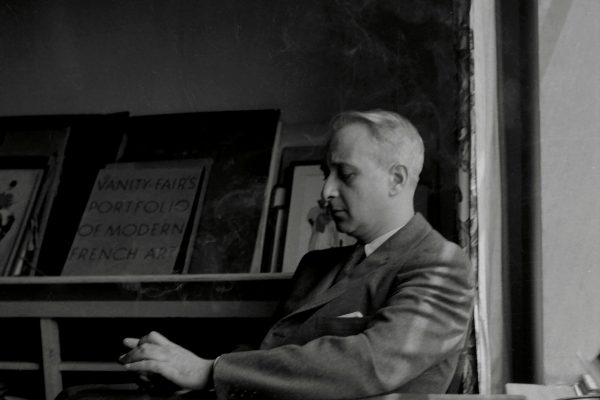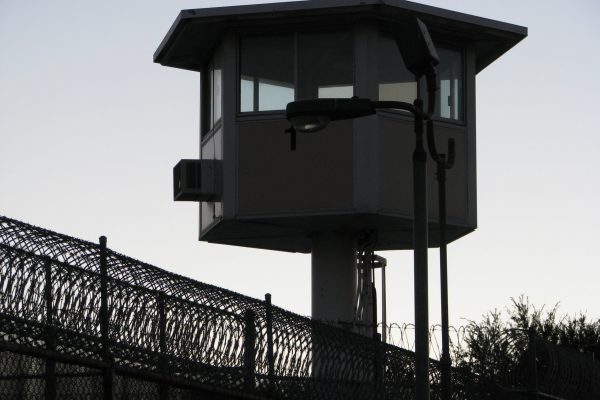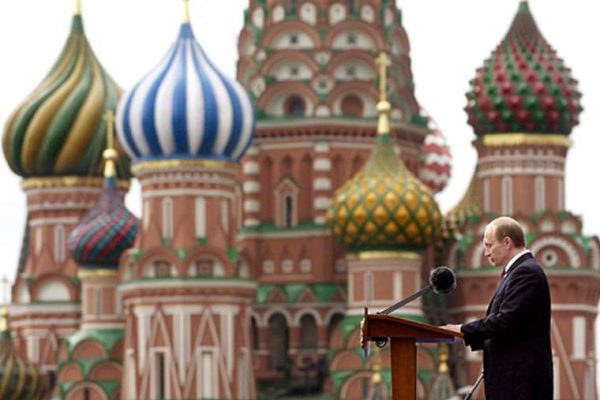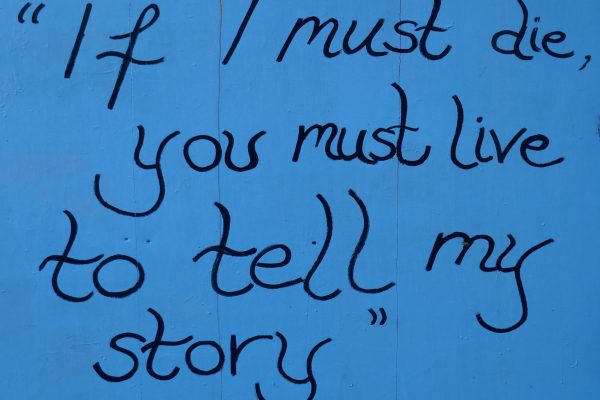Freedom Dreams: The Black Radical Imagination
Robin D. G. Kelley
Beacon Press, $24 (cloth)
In an interview in the 1980s novelist and activist Toni Cade Bambara said that she thought she was writing notes for political organizing when she began what would becomeThe Salt Eaters: “The natural response to stress and crisis is not breakdown and capitulation, but transformation and renewal. . . . Do we intend to have a future as sane, whole, governing people?” She suggests, “Immunity to the serpent’s sting can be found in our own tradition of struggle and our faculty for synthesis.”
Historian Robin D. G. Kelley takes up Bambara’s project by mining the exhilarating terrain of nineteenth- and twentieth-century artists, intellectuals, and activists who imagined a different future for black people.
Kelley’s Freedom Dreams is less concerned with those movements that have found the most support historically than it is with the extent to which black activists have been motivated by a vision of a better world beyond the revolution. In spite of the fact that, according to Kelley, “virtually every radical movement failed because the basic power relations they sought to change remain pretty much intact,” the visions he explores can “inspire new generations to continue to struggle for change.”
In chapters devoted to black Marxists and black feminism Kelley argues that the ideologies they drew from Western political and artistic traditions provided “less a revelation than a recognition of what already existed within the black tradition.” He introduces us to little-known but important figures, such as Detroit-based socialist activists James and Grace Lee Boggs and the regal Queen Mother Moore, and situates them alongside Claude McKay, Paul Robeson, W.E.B. Du Bois, and Amiri Baraka.
Kelley’s telling of the adventurous rise of RAM (the Revolutionary Action Movement) is alone worth the price of the book. The brilliant young intellectuals of RAM had a pan-Africanist socialist vision; they argued that the battle between “Western imperialism and the Third World—more than the battle between labor and capital—represented the most fundamental contradiction in our time.” The intergenerational lineage of the organization is fascinating—the young people found mentors among those radicalized in the struggles of the 1930s and 1940s, including a number of former black communists. As with the Panthers and other radical black organizations, however, RAM ultimately failed under the weight of constant surveillance and assaults from the state.
As exciting as this book is, one cannot help but come away from it despairing about today’s lack of the kind of visions it documents. But the book reminds us that visions have long histories; they are already in place when people organize around them and in so doing change and re-create them altogether. Significantly, Kelley devotes some time to the renewed interest in reparations as a possible site for future mobilization. He documents the history of the reparations movement from the years immediately following the Civil War to its reemergence in a wide range of political perspectives in the black community today. Kelley rightly attributes black nationalists with having kept a vision of reparations alive throughout the twentieth century.
If the twenty-first-century black freedom struggle takes shape around this issue, we might heed Kelley’s suggestion to conceptualize the reparations in such a way that is attentive to gender. “We need to consider things like women’s unpaid labor, reproduction, sexual abuse, and ways to make restitution for these distinctive forms of exploitation.”
As Kelley suggests, a serious engagement with black feminism may also be the key to future movements. Black feminism has engaged issues across the black political spectrum and has formed alliances with non-black progressives. Black feminists and womanists have consistently provided the most compelling egalitarian vision for the black freedom struggle. Barbara Smith and Audre Lorde were among the first to address homophobia in the black community. Black feminists were also the first to center the concerns of poor black women and children; Kelley resurrects the history of a radical group of black welfare mothers from Mount Vernon, New York, and their stunning class-based critique of the black power movement. Black feminism is largely an intellectual vision, informing other black ideologies, but if Robin Kelley is right we can hope that it might yet find a mass movement of its own.
—Farah Jasmine Griffin
The Gatekeepers: Inside the Admissions Process of a Premier College
Jacques Steinberg
Viking, $25.95 (cloth)
Jacques Steinberg’s behind-the-scenes portrait of the elite university admissions process, The Gatekeepers, is an impressive and valuable piece of reporting. The book, which grew out of a series of articles in the New York Times, closely follows a thirty-four year-old admissions officer at Wesleyan University, Ralph Figueroa, through an entire cycle of recruitment and decision-making. But Steinberg uses a wide lens to capture a complicated portrait of the network of people affected by the process, including hopeful applicants. The narrative strands intertwine as counselors and admissions officers and students meet and woo each other in sometimes surprisingly steamy courtships.
The process Steinberg documents proves the admissions officer’s common wisdom that there’s no formula for admission. It’s important where you go to high school, but doesn’t clinch things. It’s important on average to have high test scores, but lots of other things are taken into account. As the cases get decided by ambitious, hard-working, well-intentioned people, one is left with a sometimes fascinating, sometimes scary portrait of a messy process.
But it is not just, as Steinberg points out, that admissions work is done by human beings who make judgments that are “intuitive and idiosyncratic,” although that’s true. Forces acting on those admissions officers—personal idealism and institutional imperatives—pull in different directions. For instance, commenting on the amount of energy he invests in traveling around the country urging students to apply to Wesleyan, Figueroa says: “I want everyone who could possibly benefit from Wesleyan to have that chance.” Steinberg’s first gloss on this idealism is affirming: “so worthy was the goal of putting together such a community [of varied talents] that it justified the difficult and sometimes cruel practicalities that were required to make it happen.” Steinberg also suggests a more cynical answer: by measuring institutional selectivity in terms of percentage of people rejected, U.S. News and World Report’s influential rankings drive efforts to increase numbers of applicants. In spite of this institutional mandate, Figueroa reflects, “I like to focus on the more human perspective: there are going to be students who discover Wesleyan who wouldn’t have otherwise.”
The same kinds of conflict arise with respect to diversity. The Wesleyan admissions committee—in many ways typical of a lot of similarly placed schools—is extremely diverse and some of its members are quite young. (Figueroa himself is a Stanford graduate whose parents were born in Mexico, his father a lawyer and his mother an educational activist.) The diversity is consciously designed to reflect and model the diversity of the student body. And yet for all that commitment to principles of diversity, there are clear institutional limits on how admissions committees can choose. They carefully watch the numbers on diversity as the class assembles itself so that annual trends look good in U.S. News. Admissions officers, sophisticated about the correlations between scores and class and race and ethnicity, interpret the test scores of less privileged applicants differently. And yet, again, they always have their eye on their average SAT score, given the importance of that number in defining prestige. And that number is not allowed to decline, no matter what the commitment to diversity.
The book’s main weakness is that it doesn’t press these conflicting priorities. Steinberg is the consummate reporter, conjuring the thought processes of the relevant actors, while ably informing us of the political and policy debates making headlines. But one misses larger questions: what does the process Steinberg describes say about the affirmative action debate? The complexity of the admissions decision-making process certainly demonstrates why the idea that “less qualified” minority candidates are taking the places of “more qualified” white candidates is simply false; but I wanted to hear Steinberg say more about this. What would happen if institutions looked more to the kind of adults they wanted to turn out, rather than to which students would do best in the school? Steinberg doesn’t take up these kinds of questions, but scholars, educators and policy-makers who are thinking hard about merit and testing, as well as their relationship to affirmative action, should read his book.
—Andrew Hrycyna
Reflections on Exile and Other Essays
Edward W. Said
Harvard University Press, $18.95 (paper)
Edward Said is a Palestinian with American citizenship and a professor at Columbia University. He grew up in Egypt where he attended a British school. He received an Anglocentric education and at the same time learned that he was an outsider. Not fully at home in any one culture, he is an exile of many. Yet Said finds an uneasy pleasure in this status, which “gives rise to an awareness of simultaneous dimensions; . . . an awareness . . . that is contrapuntal.” It does in fact endow him with a tremendously expansive critical vision that encompasses a complex cultural world. In Reflections on Exile, a collection of essays written over a span of thirty years, Said’s topics range from Michel Foucault’s notions of power to the artistry of belly dancer Tahia Carioca’s undulations. Equally wide-ranging discussions of artists and intellectual figures—Conrad, Vico, Nietzsche, Mahfouz, Glenn Gould, and Wagner—abound. However, Said’s insights born of experience are particularly valuable in his discussion of imperialism and its ramifications for cultures and politics.
Said resists the notion that cultures are fixed entities with impenetrable boundaries. Instead multiple histories and narratives of dissent coexist and inform each other within the dominant narrative of any given culture. In turn, all cultures engage in a complex traffic of ideas; they are in constant flux. While Said does not dispute that nationalism is a powerful symbol around which a colonized or formerly colonized people can rally—it enables a dispossessed culture to revolt against its oppressors and reclaim its identity—he argues that it assumes a fixed and elevated cultural identity. Once independence is achieved, Said argues, blind nationalism can lead the newly liberated society to perpetrate the same acts of discrimination that it previously suffered. Thus we find ourselves trapped in the “unforgiving dialectic of colonialism.” Recognizing the fluidity of cultures, we can begin to tear down these constructs.
In an elegant essay, Said reasons that we are not movinginevitably closer to the “clash of civilizations” that Samuel P. Huntington foresees because, in reality, cultures aren’t unchanging and irreconcilable. But if we resort to simplifications—us-versus-them rhetoric that pits “Western civilization” against “Islamic civilization” and stirs nationalist passions—we will only exacerbate conflict.
Said believes that the intellectual has a role to play in realizing a more peaceful global existence. “In the generally disconnected and fragmentary public sphere, it falls to the intellectual to make the connections that are otherwise hidden; to provide alternatives for mistaken policies; to remind the audience of principle.” (503) With courage and tireless commitment, Said strives to do just that in these essays, which form a remarkably cohesive whole and attest to the rigor and passionate seriousness of a lifetime of scholarship.
—Kate Blakinger
War Is a Force That Gives Us Meaning
Chris Hedges
PublicAffairs, $23 (cloth)
This book’s readers must survive an onslaught: charred remains strapped into the 1,500 vehicles of a retreating Iraqi convoy strafed by US fighter jets; sexual slaves in Argentina’s dirty war drugged and thrown from helicopters into the sea; a cameraman who, having just filmed a dying Serbian girl, runs through the streets convinced that his camera can kill. About as logically organized as a battlefield, the devastating anecdotes of Hedges’s meditation on war sit in a dense fabric of literary quotation and lyrical speculation. But the subject defies description, so he evokes it with a trail of destruction. Kindled with martyrs, fueled by nationalist myths, war distorts memory and exacts allegiance. War is a god, war is suicide, war is necrophilia. War is messy, raw, and brutal.
Interestingly, war is also addictive, not just to soldiers, but to the journalists who chase them around the globe. The author describes first seeing his job as a sort of sport. Later he starts using it as an emotional crutch, then develops a serious addiction to its thrills and risks. It’s hard not to wonder how close he has been, and may still get, to the kind of deathwish mentality that led some of his journalist friends to their deaths. Even with the stakes so high, he can’t help but take a literary approach. Face up in the back of an Iraqi jeep with an AK-47 to his forehead, Chris Hedges’s mind is on the copy of The Iliad in the pocket of his stolen jacket. War may make people in its own image, he tells us, but people can still make literature, and free themselves by escaping into it.
In the end, however, the book is too effective in evoking war for its brief nod to the redemptive power of literature to be credible. The author seems to need the literature of all-consuming violence most.
—Jascha Hoffman





